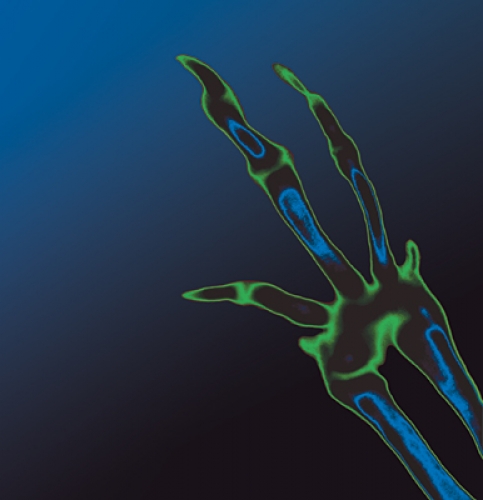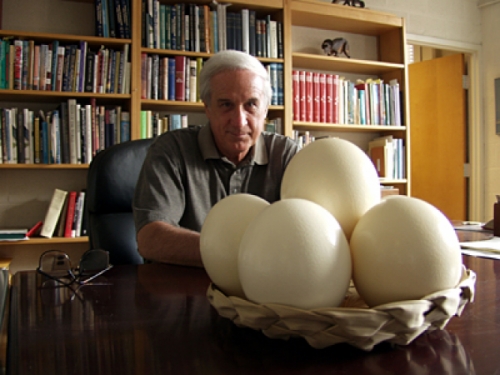Alan Feduccia hasn’t spent long trying to convince scientists that birds didn’t evolve from dinosaurs. “Just thirty years,” he says.
The latest installment in Feduccia’s quest is a study showing that ostriches — one of the most primitive living birds — don’t have the series of “fingers” you’d expect if they were descended from dinosaurs.
Birds have three fingers, but whether they are fingers one, two, and three (corresponding to the human thumb, index finger and middle finger) or two, three, and four (corresponding to the index finger, middle finger, and ring finger) has been disputed since 1820. Feduccia, professor and chair of biology, and Julie Nowicki, a recent Ph.D. graduate, explored the question by examining the contents of ostrich eggs at various stages of development. They found that the birds’ fingers are in the two-three-four configuration. The first finger (corresponding to the human thumb) appears at day 14, but recedes by day 17. “It’s transitory,” Feduccia says.
Previous research on fossils shows that dinosaurs had fingers one, two, and three. “How do you derive a two-three-four bird hand from a one-two-three dinosaur hand?” Feduccia asks. Not impossible to do, he says, but unlikely. “It would involve some major reversals in evolution.”
Before this study, scientists had looked mostly at the end of the developmental period in birds. “We discovered that the entire meaningful development of the skeleton takes place between day eight and fifteen of a forty-two-day incubation period,” Feduccia says. The rest of the ostrich incubation period consists of “basically adding on, refining the skeletal development.”
This study appeared as the cover story in the September 2002 issue of the German biology journal Naturwissenschaften. Two additional independent studies that support the two-three-four configuration in birds appeared in the August 15, 2002 issue of the Journal of Experimental Zoology.




